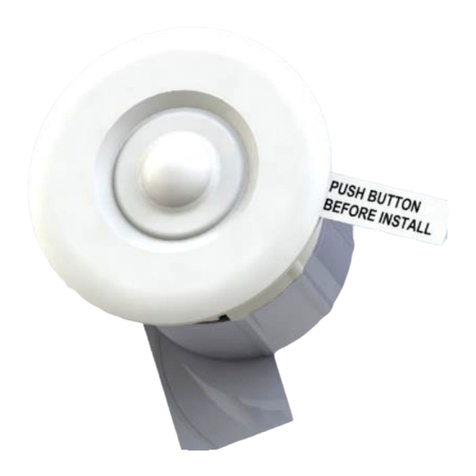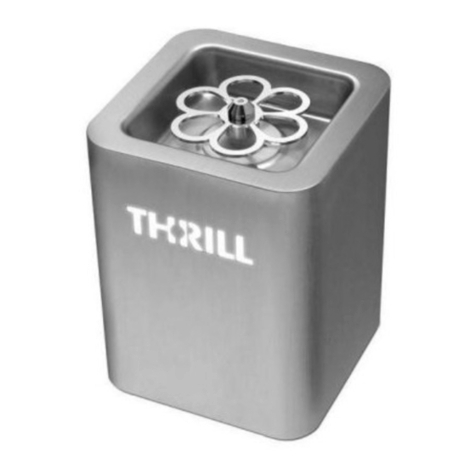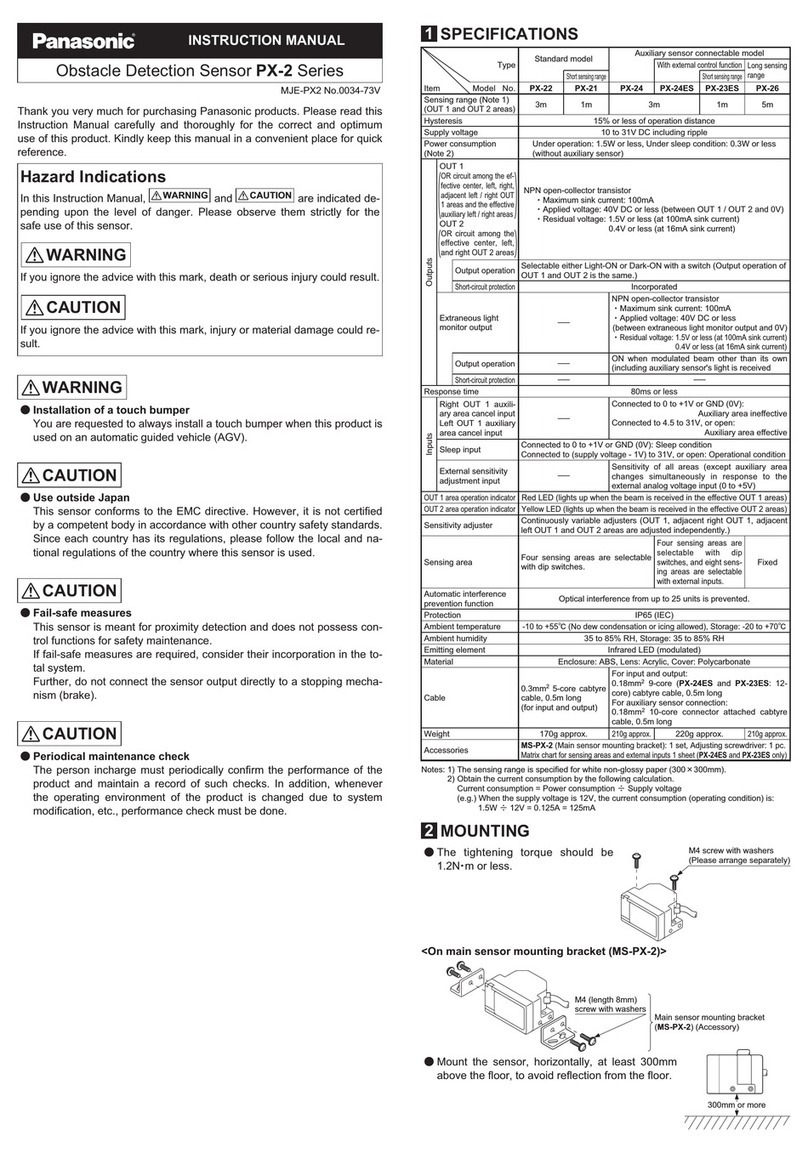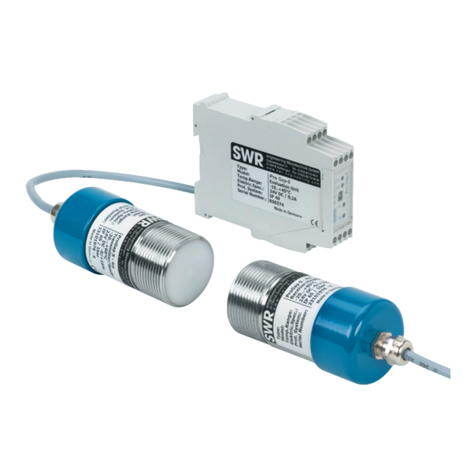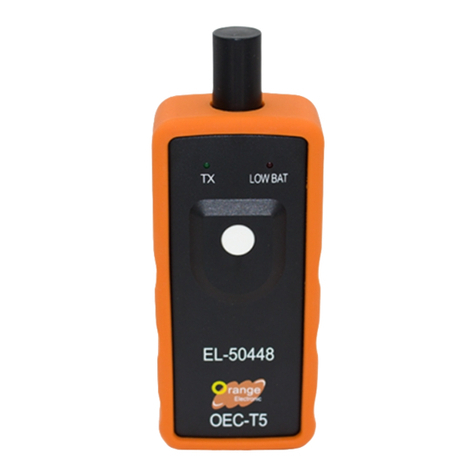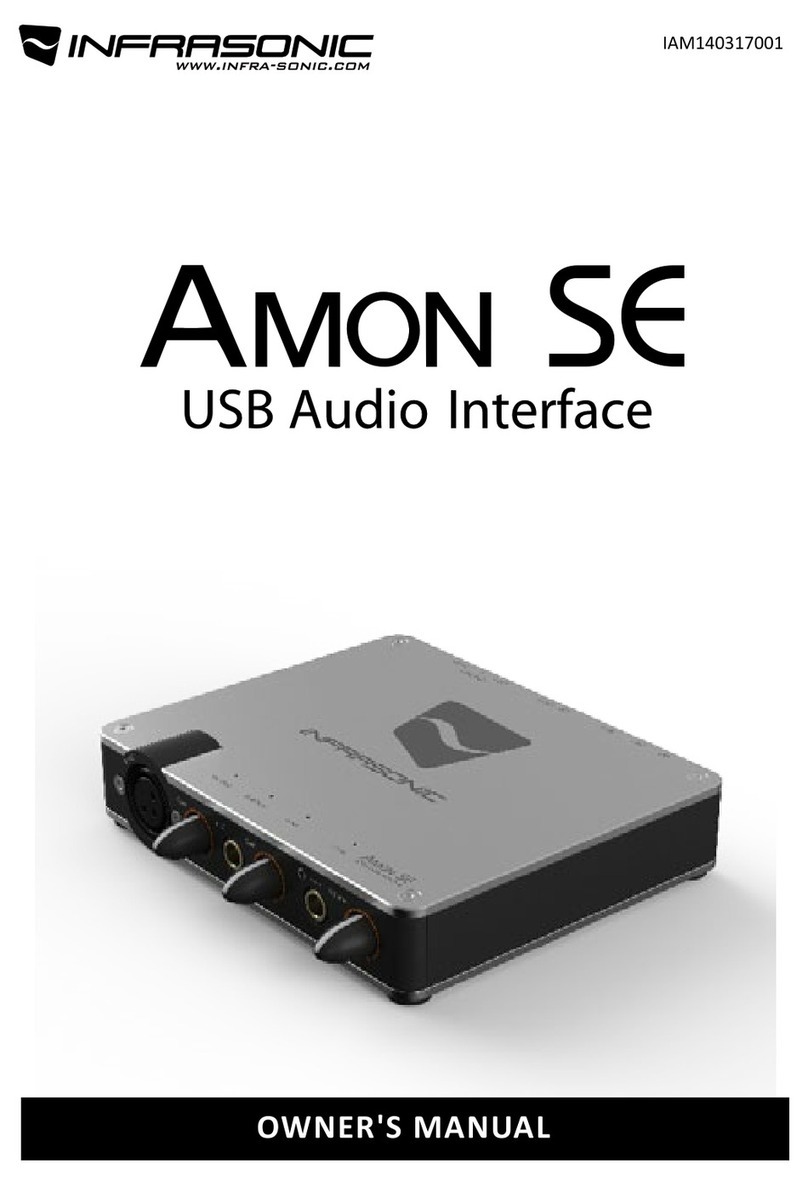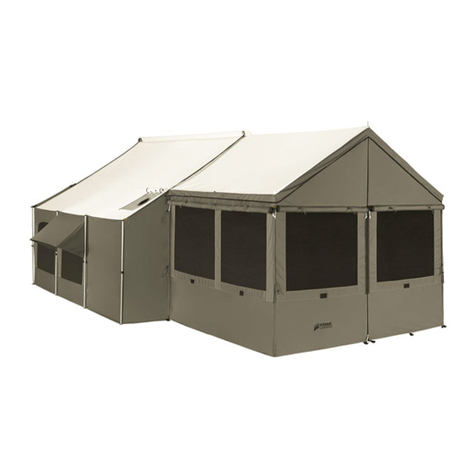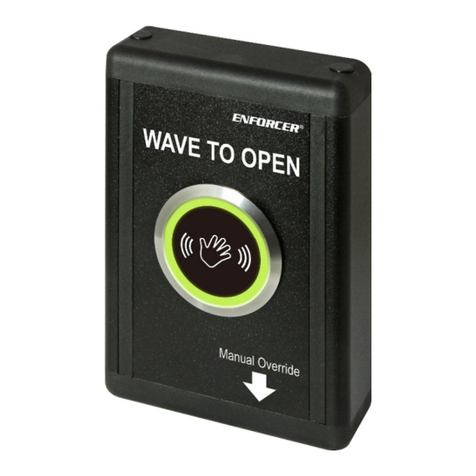Huber MPC TC 45 User manual

MPC
Immersion Cooler


OPERATION MANUAL
MPC
Immersion Cooler


OPERATION MANUAL
V2.3.0en/03.08.21//1.30 Immersion Cooler
5
Immersion Cooler
MPC®
This operation manual is a translation of the original operation manual.
VALID FOR:
TC®45
TC®50
TC®100
Abbreviations used in model names:
Without = without controller, air cooled, E = with controller and Pt100 sensor,
-F = flexible evaporator, -Flasers = longer evaporator, w = water cooled

OPERATION MANUAL
Immersion Cooler V2.3.0en/03.08.21//1.30
6
MPC controller

OPERATION MANUAL
V2.3.0en/03.08.21//1.30 Immersion Cooler
7
Table of contents
V2.3.0en/03.08.21//1.30
1Introduction 12
1.1 Identification / symbols in the operation manual ......................................... 12
1.2 Information on the EU Declaration of Conformity......................................... 12
1.3 Safety .......................................................................................................... 12
1.3.1 Symbols used for Safety Instructions..............................................................12
1.3.2 Representation of safety identifiers on the temperature control unit...........13
1.3.3 Proper operation.............................................................................................13
1.3.4 Reasonably foreseeable misuse......................................................................14
1.4 Responsible bodies and operators – Obligations and requirements........................ 14
1.4.1 Obligations of the responsible body ...............................................................14
1.4.1.1 Proper disposal of resources and consumables .........................................15
1.4.1.2 Temperature control unit with natural refrigerants (NR) ..........................15
1.4.2 Requirements for operators ...........................................................................16
1.4.3 Obligations of the operators...........................................................................17
1.5 General information..................................................................................... 17
1.5.1 Description of workstation .............................................................................17
1.5.2 Safety devices to DIN 12876 ...........................................................................17
1.5.3 Further protective devices ..............................................................................18
1.5.3.1 Power interruption.....................................................................................18
1.6 Exemplary illustrations of the cooling variants.............................................. 18
2Commissioning 20
2.1 In-plant transport......................................................................................... 20
2.1.1 Lifting and transporting the temperature control unit...................................20
2.1.1.1 Temperature control unit with lifting eyes ................................................20
2.1.1.2 Temperature control unit without lifting eyes...........................................21
2.1.2 Mounting/removing leveling feet...................................................................21
2.1.3 Positioning the temperature control unit.......................................................22
2.1.3.1 Temperature control unit with casters ......................................................22
2.1.3.2 Temperature control unit without casters.................................................22
2.2 Unpacking.................................................................................................... 22
2.3 Ambient conditions...................................................................................... 22
2.3.1 EMC-specific notes..........................................................................................24
2.4 Installation conditions.................................................................................. 24
2.5 Recommended cooling water hoses ............................................................. 24
2.6 Wrench sizes and torques............................................................................. 25
2.7 Temperature control units with water cooling.............................................. 25
2.8 Preparations for operation ........................................................................... 27
2.8.1 Unscrewing/activating the leveling feet (if any) .............................................27
2.8.2 Use of the Probe [67]......................................................................................27
2.8.2.1 Immersion depth of the probe [67]............................................................28
2.8.3 Connecting the functional earth.....................................................................28
2.9 Connecting to the power supply ................................................................... 28
2.9.1 Connection using socket with protective earth (PE).......................................28
2.9.2 Connection via hard wiring .............................................................................29
3Function description 30

OPERATION MANUAL
Immersion Cooler V2.3.0en/03.08.21//1.30
8
3.1 Function description of the temperature control unit ................................... 30
3.1.1 General functions............................................................................................30
3.1.2 Other functions...............................................................................................30
3.2 Information on the thermal fluids ................................................................ 30
3.3 To be noted when planning the test ............................................................. 31
3.4 Only valid for temperature control units with MPC controller:...................... 31
3.4.1 Display and control instruments.....................................................................31
3.4.1.1 Display ........................................................................................................31
3.4.1.2 LED display status .......................................................................................31
3.4.1.3Arrow keys..................................................................................................31
3.4.1.4 SET key........................................................................................................31
3.4.1.5 Start/Stop key.............................................................................................32
3.4.2 Menu function ................................................................................................32
3.4.3 Function examples ..........................................................................................32
3.4.3.1 Display setpoint..........................................................................................32
3.4.3.2 Set/change setpoint ...................................................................................32
3.4.3.3Changing the Auto-Start function...............................................................32
4Setup mode 34
4.1 Setup mode ................................................................................................. 34
4.1.1 Turning on the temperature control unit - without controller.......................34
4.1.2 Turn temperature control unit off - without controller..................................34
4.1.3 Turning off the temperature control unit / with controller............................34
4.1.4 Turning off the temperature control unit - with controller ............................34
5Normal operation 35
5.1 Automatic operation .................................................................................... 35
5.1.1 Temperature control.......................................................................................35
5.1.1.1 Starting the temperature control process - without controller .................35
5.1.1.2 Ending the temperature control process - without controller...................35
5.1.1.3 Starting the temperature control process - with controller.......................35
5.1.1.4 Ending the temperature control process - with controller ........................35
6Interfaces and software update 36
6.1 Interfaces on the temperature control unit - applies to MPC controller only . 36
6.1.1 Connection jack for Pt100 process controller sensor .....................................36
7Service/maintenance 37
7.1 Electrical fuse (if available)........................................................................... 37
7.2 Display of errors - only for MPC controllers................................................... 37
7.3 Maintenance................................................................................................ 38
7.3.1 Function check and visual inspection .............................................................38
7.3.2 Replacing coolant hoses..................................................................................39
7.3.3 Clean liquefier fins (air-cooled temperature control unit) .............................39
7.3.4 Clean hat-type strainer (dirt trap) (water-cooled temperature control unit).39
7.4 Cleaning the surfaces ................................................................................... 40
7.5 Plug contacts................................................................................................ 41
7.6 Decontamination/repairs ............................................................................. 41
8Shutting down 42
8.1 Safety instructions and basic principles ........................................................ 42
8.2 Switch-off .................................................................................................... 42
8.3 Remove probe [67] from thermal fluid ......................................................... 42

OPERATION MANUAL
V2.3.0en/03.08.21//1.30 Immersion Cooler
9
8.4 Draining the cooling water ........................................................................... 43
8.4.1 Draining process .............................................................................................43
8.5 Packing ........................................................................................................ 43
8.6 Shipping....................................................................................................... 44
8.7 Disposal ....................................................................................................... 44
8.8 Contact data ................................................................................................ 45
8.8.1 Telephone number: Customer Support ..........................................................45
8.8.2 Telephone number: Sales ...............................................................................45
8.8.3Email address: Customer Support...................................................................45
8.9 Certificate of Compliance ............................................................................. 45
9Annex 46

OPERATION MANUAL
Immersion Cooler V2.3.0en/03.08.21//1.30
10

OPERATION MANUAL
V2.3.0en/03.08.21//1.30 Immersion Cooler
11
Foreword
Dear Customer,
Thank you for choosing a temperature control unit from Peter Huber Kältemaschinenbau AG. You
have made a good choice. Thank you for your trust.
Please read the operation manual carefully before putting the unit into operation. Strictly follow all
notes and safety instructions.
Follow the operation manual with regard to transport, start-up, operation, maintenance, repair,
storage and disposal of the temperature control unit.
We fully warrant the temperature control unit for the specified intended operation.
The models listed on page 5 are referred to in this operation manual as temperature control units
and Peter Huber Kältemaschinenbau AG as Huber company or Huber.
Liability for errors and misprints excluded.
The following trademarks and the Huber logo are registered trademarks of Peter Huber Kältemaschinenbau AG
in Germany and/or other countries worldwide: BFT®, CC®, Chili®, Com.G@te®, Compatible Control®, CoolNet®,
DC®, E-grade®, Grande Fleur®, Huber Piccolo®, KISS®, Minichiller®, Ministat®, MP®, MPC®, Peter Huber Mini-
chiller®, Petite Fleur®, Pilot ONE®, RotaCool®, Rotostat®, SpyControl®, SpyLight®, Tango®, TC®, UC®, Unical®,
Unichiller®, Unimotive®, Unipump®, Unistat®, Unistat Tango®, Variostat®. The following trademarks are regis-
tered in Germany to DWS Synthesetechnik: DW-Therm®, DW-Therm HT®. The following trademark is a registered
trademark of BASF SE: Glysantin®.

Introduction
OPERATION MANUAL Chapter 1
Immersion Cooler V2.3.0en/03.08.21//1.30
12
1Introduction
1.1 Identification / symbols in the operation manual
The following identifications and symbols are used in the texts and illustrations.
Identification / symbol Description
→Reference to information / procedure.
»TEXT« Reference to a chapter in the operation manual. In the digital version, the text
is clickable.
>TEXT< [NUMBER] Reference to the wiring diagram in the annex. The designation and the search
digit are specified.
>TEXT< [LETTER] Reference to a drawing in the same paragraph. The designation and the
search digit are specified.
▪List, first level
‒List, second level
1.2 Information on the EU Declaration of Conformity
The equipment complies with the basic health and safety requirements of the European Directives
listed below:
▪Machinery Directive
▪Low Voltage Directive
▪EMC Directive
1.3 Safety
1.3.1 Symbols used for Safety Instructions
Safety instructions are marked by the below combinations of pictograms and signal words. The
signal word describes the classification of the residual risk when disregarding the operation manual.
Denotes an immediate hazardous situation that will result in death or serious injuries.
Denotes a general hazardous situation that may result in death or serious injuries.
Denotes a hazardous situation that can result in injury.
Denotes a situation that can result in property material damage.
Denotes important notes and usable hints.
Overview

Introduction
Chapter 1 OPERATION MANUAL
V2.3.0en/03.08.21//1.30 Immersion Cooler
13
The safety information in this operation manual is designed to protect the operating company, the
operator and the equipment from damage. First inform yourself about any residual risks due to
misuse before you start an operation.
1.3.2 Representation of safety identifiers on the temperature control unit
The following pictograms are used as safety identifiers. The table gives an overview of the safety
identifiers used here.
Identifier Description
Mandatory sign
- Observe the instructions
Warning sign
- General warning sign
- Observe the instructions
- Warning of electrical voltage
- Warning of hot surface
- Warning of flammable substances
1.3.3 Proper operation
Operating the temperature control unit in a potentially explosive area
DEATH THROUGH EXPLOSION
Do NOT install or start up the temperature control unit within an ATEX zone.
Safety information and
procedure
Overview

Introduction
OPERATION MANUAL Chapter 1
Immersion Cooler V2.3.0en/03.08.21//1.30
14
Improper use
SERIOUS INJURY AND PROPERTY DAMAGE
Store the operation manual where it is easy to access in close proximity to the temperature
control unit.
Only adequately qualified operators may work with the temperature control unit.
Operators must be trained before handling the temperature control unit.
Check that the operators have read and understood the operation manual.
Define precise responsibilities of the operators.
Personal protective equipment must be provided to the operators.
Be sure to follow the responsible body’s safety rules to protect life and limb and to limit dam-
ages!
Modifications to the temperature control unit by third-parties
DAMAGE TO THE TEMPERATURE CONTROL UNIT
Do not allow third parties to make technical modifications to the temperature control unit.
The EU declaration of conformity becomes invalid if any modifications are made to the tem-
perature control unit without the approval of Huber.
Only specialists trained by Huber may carry out modifications, repairs or maintenance work.
The following must be observed without fail:
Only use the temperature control unit in a fault-free condition!
Have the start-up and repairs carried out by specialists only!
Do not ignore, bypass, dismantle or disconnect any safety devices!
The temperature control unit must not be used for any purposes other than temperature control in
accordance with the operation manual.
The temperature control unit is made for industrial use. The temperature control unit is solely intended as
a cooling device for cooling liquids in containers. The containers used must be resistant to temperature
and thermal fluids. The temperature control unit does not have an overtemperature protection and must
be additionally protected when used with heating elements. Note the temperature control unit’s maxi-
mum operating temperature. The installation in public buildings is prohibited. Only use thermal fluids
suitable for the overall system. The cooling capacity is provided at the >Probe< [67]. For the technical
specification, refer to the datasheet. →From page 46, section »Annex«. Install, set up and operate the
temperature control unit according to the instructions in this operation manual. Any failure to comply
with the operation manual is considered as improper operation. The temperature control unit was manu-
factured according to the state of the art and the recognized safety rules and regulations. Safety devices
are installed in your temperature control unit.
1.3.4 Reasonably foreseeable misuse
Use with medical devices (e.g. in Vitro diagnostic procedure) or for direct foodstuff temperature
control is NOT permissible.
The temperature control unit must NOT be used for any purposes other than temperature control in
accordance with the operation manual.
The manufacturer accepts NO liability for damage caused by technical modifications to the temper-
ature control unit, improper handling or use of the temperature control unit if the operation manu-
al is not observed.
1.4 Responsible bodies and operators – Obligations and requirements
1.4.1 Obligations of the responsible body
The operation manual is to be stored where it is easy to access in close proximity to the temperature
control unit. Only adequately qualified operators (e.g. chemists, CTA, physicists etc.) are permitted
to work with the temperature control unit. Operators must be trained before handling the tempera-
ture control unit. Check that the operators have read and understood the operation manual. Define
precise responsibilities of the operators. Personal protective equipment must be provided to the
operators.

Introduction
Chapter 1 OPERATION MANUAL
V2.3.0en/03.08.21//1.30 Immersion Cooler
15
▪The responsible body must install a condensation water / thermal fluid drip tray below the tem-
perature control unit.
▪The use of a drip tray may be prescribed by national legislation for the installation area of the
temperature control unit (incl. accessory). The responsible body must check and apply the na-
tional regulations applicable for it accordingly.
▪The temperature control unit complies with all applicable safety standards.
▪Your system, which uses our temperature control unit, must be equally safe.
▪The responsible body must design the system to ensure it is safe.
▪Huber is not responsible for the safety of your system. The responsible body is responsible for the
safety of the system.
▪Although the temperature control unit provided by Huber meets all the applicable safety stand-
ards, integration into a system may give rise to hazards that are characteristic of the other sys-
tem’s design and beyond the control of Huber.
▪It is the responsibility of the system integrator to ensure that the overall system, into which this
temperature control unit is integrated, is safe.
▪The >Mains isolator< [36] (if present) can be locked in the off position to facilitate safe system
installation and maintenance of the temperature control unit. It is the responsibility of the re-
sponsible body to develop any lock-out/tag-out procedure for the energy source in accordance
with local regulations (e.g. CFR 1910.147 for the US).
1.4.1.1 Proper disposal of resources and consumables
Do comply with all national disposal regulations applicable for you. Contact your local waste man-
agement company for any questions concerning disposal.
Material / Aids Disposal / Cleaning
Packaging material Keep the packaging material for future use (e.g. transport).
Thermal fluid
Please refer to the safety data sheet of the thermal fluid used for information on its
proper disposal.
Use the original thermal fluid container when disposing it.
Filling accessories, e.g.
beaker
Clean the filling accessories for reuse. Make sure that the materials and cleaning
agents used are properly disposed of.
Aids such as towels,
cleaning cloths
Tools used to take up spilled thermal fluid must be disposed of in the same fashion
as the thermal fluid itself.
Tools used for cleaning must be disposed of depending on the cleaning agent used.
Cleaning agents such as
stainless steel cleaning
agents, sensitive-fabrics
detergents
Please refer to the safety data sheet of the cleaning agent used for information on its
proper disposal.
Use the original containers when disposing of large quantities of cleaning agents.
Consumables such as air
filter mats, temperature
control hoses
Please refer to the safety data sheet of the consumables used for information on
their proper disposal.
1.4.1.2 Temperature control unit with natural refrigerants (NR)
Over 8 g refrigerant per m³ room air
DEATH OR SERIOUS INJURY DUE TO EXPLOSION
Observe the rating plate (amount of natural refrigerant contained) and the room size (maximum room
concentration of natural refrigerant in case of leakage) when installing the temperature control unit.
Over 8 g refrigerant per m³ room air: A gas warning sensor must be fitted and functioning.
The gas warning sensor must be calibrated and maintained at regular intervals (between 6 and
12 months).
The temperature control unit is not approved for operation in an ATEX zone.
Huber products with natural refrigerants work with numerous proven, safe and highly-sustainable
technologies. The relevant standards and regulations for temperature control units with natural
refrigerants contain a number of stipulations, the importance of complying with which is set out
below. Please additionally: →Page 13, section »Proper operation«.
Overview

Introduction
OPERATION MANUAL Chapter 1
Immersion Cooler V2.3.0en/03.08.21//1.30
16
Huber temperature control units are constructed to be permanently sealed and are carefully
checked for leak tightness. Temperature control units with more than 150 g natural refrigerant are
equipped with an additional gas warning sensor.
For the filling capacity of the temperature control unit, refer to the data sheet. →From page 46, section
»Annex«. Or to the rating plate on the back of the temperature control unit. Please also consider: →Page
22, section »Ambient conditions« and →Page 24, section »Installation conditions«.
Class of
application
field
Application field Example of the installation
location
Max.
quantity of
refrigerant
AND
Max. permissible
quantity above
ground level (GL)
A General Publicly accessible area in a
public building
8 g/m3
ambient air
1.5 kg
B Monitored Laboratories 2.5 kg
C
Access only for
authorized
persons
Production equipment 10.0 kg
Temperature control units with more than 1 kg refrigerant must not be installed below ground level (GL).
Temperature control units with up to 150 g natural refrigerant
▪The temperature control unit has been constructed to the requirements of EU and EFTA countries.
▪Use the table as guidance for classifying the application field. Respect the max. refrigerant quanti-
ty stated therein.
Temperature control units with more than 150 g natural refrigerant
▪The temperature control unit has been constructed to the requirements of EU and EFTA countries.
▪Use the table as guidance for classifying the application field. Respect the max. refrigerant quanti-
ty or the permissible highest quantity above ground level (GL) stated therein.
▪For more information about the pre-installed gas detection sensor:
-The built-in gas detection sensor enables a safety shutdown at 20% of the lower explosive
limit via a power disconnect relay that is to be installed by the responsible body. The
temperature control unit is thus switched off early and safely in case of fault.
-A 24 V DC external power supply must be available for the pre-installed gas warning sen-
sor. The alarm output of the gas warning sensor uses a 4 - 20 mA signal. Please refer to the
data sheet of the gas warning sensor for further technical information. A separate pro-
cessing unit is available as an accessory for the control of the power disconnect relay. The
processing unit provides a potential-free switching contact and simultaneously provides
the power supply and analysis of the gas warning sensor. Both variants require the respon-
sible body to provide the necessary dimensioning and installation. Please refer to the data
sheet of the gas warning sensor for the technical information necessary for the installa-
tion. The alarm of the gas detection system can be connected to the responsible body’s
alarm control unit. The responsible body is responsible for this and for the other measures.
-The responsible body is responsible for the calibration of the gas detection sensor prior to
initial operation and the observance of calibration and maintenance intervals according to
the operation manual. We recommend to set calibration and maintenance intervals be-
tween 6 and 12 months if no information is provided. For increased safety requirements,
shorter intervals can be specified. On request we will recommend a specialist company to
carry out the calibration and maintenance.
1.4.2 Requirements for operators
Work on the temperature control unit is reserved for appropriately qualified specialists, who have
been assigned and trained by the responsible body to do so. Operators must be at least 18 years old.
Under 18-year olds may operate the temperature control unit only under the supervision of a quali-
fied specialist. The operator is responsible vis-a-vis third-parties in the work area.
Classifying the applica-
tion field

Introduction
Chapter 1 OPERATION MANUAL
V2.3.0en/03.08.21//1.30 Immersion Cooler
17
1.4.3 Obligations of the operators
Carefully read the operation manual before operating the temperature control unit. Please observe
the safety instructions. When operating the temperature control unit, wear appropriate personal
protective equipment (e.g. safety goggles, protective gloves, non-slip shoes).
1.5 General information
1.5.1 Description of workstation
The workstation is located at the control panel in front of the temperature control unit. The workstation is
determined by the customer's connected peripheries. Accordingly, it must be designed safe by the re-
sponsible body. The workstation design also depends on the applicable requirements of the German
occupational health and safety regulations [BetrSichV] and the risk analysis for the workstation.
1.5.2 Safety devices to DIN 12876
The temperature control unit is operated with a heating element without additional protection.
RISK OF INJURY
The temperature control unit does not have an overtemperature protection and must be addi-
tionally protected when used with heating elements.
Note the temperature control unit’s maximum operating temperature. For the values, refer to
the datasheet. →From page 46, section »Annex«.
The rating of your temperature control unit is stated on the data sheet in the appendix.
Classification Temperature
control medium Technical requirements Identification d)
I Non-combustible a) Overheat protection c) NFL
II Combustible b) Adjustable overheat protection FL
III Combustible b) Adjustable overtemperature protection
and additional low-level protection FL
a) Usually water; other fluids only if non-combustible even within the temperature range of an individual fault.
b) The temperature control media must have a fire point of ≥ 65 °C.
c) The overheat protection can, for instance, be realized using a suitable fill level sensor or a suitable temperature limiter.
d) Optional at the choice of the manufacturer.
▪Temperature control units with heating correspond to class number III/FL. These temperature
control units are characterized by an “H” in the device name.
▪Temperature control units without heating correspond to class number I/NFL.
Rating of laboratory
thermostats and
laboratory baths
Overview of the tem-
perature thresholds.
The setpoint can only
be changed for tem-
perature control units
with MPC controller

Introduction
OPERATION MANUAL Chapter 1
Immersion Cooler V2.3.0en/03.08.21//1.30
18
1.5.3 Further protective devices
Emergency strategy – interrupt the power grid connection!
To determine the type of switch or switch combination your temperature control unit is equipped
with, please refer to the wiring diagram. →From page 46, section »Annex«.
Temperature control units with >Mains isolator< [36] (red/yellow or gray): Turn the >Mains
isolator< [36] to the “0” position.
Temperature control units with >Mains isolator< [36] (red/yellow) and additional >Appliance
switch< [37] (gray): Turn the >Mains isolator< [36] to the “0” position. Then turn the >Appliance
switch< [37] to the “0” position!
Temperature control units with >Mains isolator< [36] (gray) and >Emergency stop switch< [70]
(red/yellow): Press the >Emergency stop switch< [70]. Then turn the >Main switch< [36] to the
“0” position!
Temperature control units with >Mains switch< [37]:Power supply via socket: Disconnect the
temperature control unit from the power supply. Then turn the >Mains isolator< [37] to the “0”
position! Power supply via hard wiring: Disconnect the power grid supply by means of the build-
ing’s circuit breaker. Then turn the >Mains isolator< [37] to the “0” position!
Temperature control units without a switch or inside a protective housing: Connection via sock-
et: Disconnect the temperature control unit from the power supply. Connection via hard wiring:
Disconnect the power grid supply by means of the building’s circuit breaker!
1.5.3.1 Power interruption
Following a power outage (or when switching on the temperature control unit), this function can be
used to determine how the temperature control unit is supposed to respond.
Auto start function switched off
The temperature control is started only by manual input when the temperature control unit is
turned on.
Auto start function switched on
The temperature control unit is set to the same state it was in before the power outage. For exam-
ple, before the power outage: Temperature control is off; after power outage: Temperature control
is off. If temperature control was active during a power outage, the process will automatically con-
tinue after the power outage.
→Page 32, section »Changing the Auto-Start function«.
1.6 Exemplary illustrations of the cooling variants
Example: Air and
water cooling

Introduction
Chapter 1 OPERATION MANUAL
V2.3.0en/03.08.21//1.30 Immersion Cooler
19
Air cooling: Air inlet
Water cooling: Water
connection

Commissioning
OPERATION MANUAL Chapter 2
Immersion Cooler V2.3.0en/03.08.21//1.30
20
2Commissioning
2.1 In-plant transport
Temperature control unit is not transported / moved according to the specifications in this operation manual
DEATH OR SERIOUS INJURY DUE TO CRUSHING
Always transport / move the temperature control unit according to the specifications in this
operation manual.
Wear personal protective equipment during transport.
Always work with the specified number of persons when moving the temperature control unit
on casters (if any).
If the temperature control unit is equipped with casters and parking brakes: 2 parking brakes are always
freely accessible when moving the temperature control unit. Activate the 2 parking brakes in an emergen-
cy! If only one parking brake is activated on the casters in an emergency: The temperature control unit is
not stopped but rotates around the axis of the caster with the activated parking brake!
Temperature control unit transported in a horizontal position
DAMAGE TO THE COMPRESSOR
Only transport the temperature control unit in an upright position.
Filled temperature control unit is transported
MATERIAL DAMAGE DUE TO OVERFLOWING THERMAL FLUID
Only transport an emptied temperature control unit.
▪If available, use the lugs on the top side of the temperature control unit for transportation.
▪Use an industrial truck for transport.
▪The casters (if present) on the temperature control unit are not suitable for transport. The casters
are symmetrically loaded with 25% of the total mass of the temperature control unit.
▪Remove the packing material (e.g. the palette) only at the place of installation.
▪Protect the temperature control unit from transport damage.
▪Do not transport the temperature control unit alone and without aids.
▪Check the load bearing capacity of the transportation route and the place of installation.
▪The parking brakes at the casters (if any) must be activated and/or the leveling feet (if any) must
be unscrewed/activated before the temperature control unit is put into operation. →Page 27,
section »Unscrewing/activating the leveling feet (if any)«.
2.1.1 Lifting and transporting the temperature control unit
2.1.1.1 Temperature control unit with lifting eyes
The temperature control unit is raised at the lifting eyes without load handling attachments
DAMAGE TO THE TEMPERATURE CONTROL UNIT
Always use load handling attachments when lifting and transporting the temperature control unit.
The lifting eyes are only designed for a load without inclination (0°).
The load handling attachment used must be adequately dimensioned. Take the dimensions and
weight of the temperature control unit into account.
▪Do not lift and transport the temperature control unit at the lifting eyes alone and without aids.
▪Lift and transport the temperature control unit at the lifting eyes only with a crane or an industrial truck.
Example: lifting eyes
(round, angular, and
recessed (left to right))
This manual suits for next models
2
Table of contents
Popular Accessories manuals by other brands
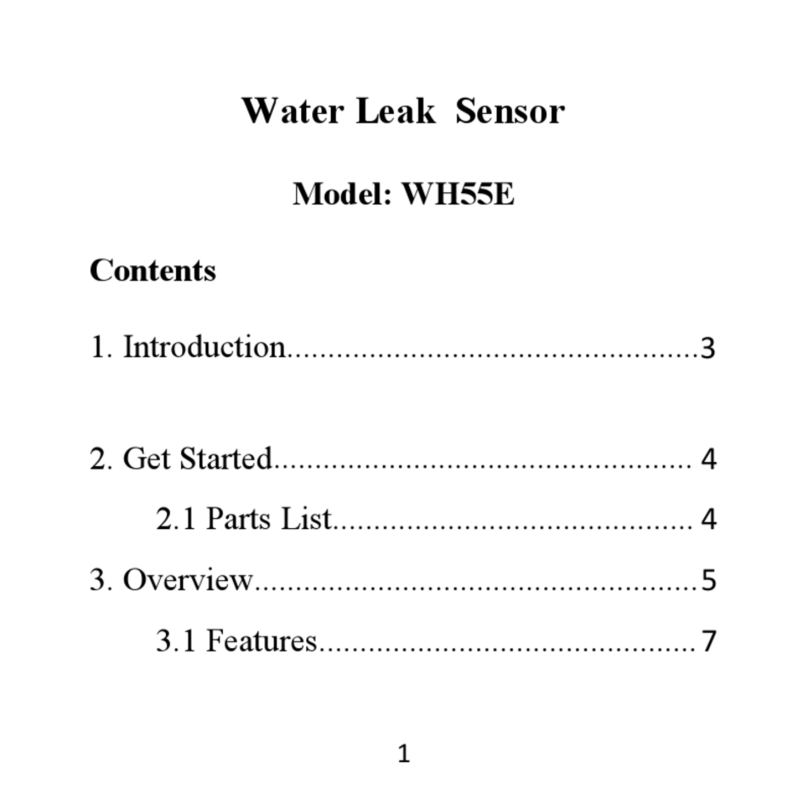
ECOWITT
ECOWITT WH55E manual

Rubbermaid
Rubbermaid Thermo-Electric Travel Cooler and Warmer Owner's manual & warranty information

Bosch
Bosch SCD 110 operating instructions
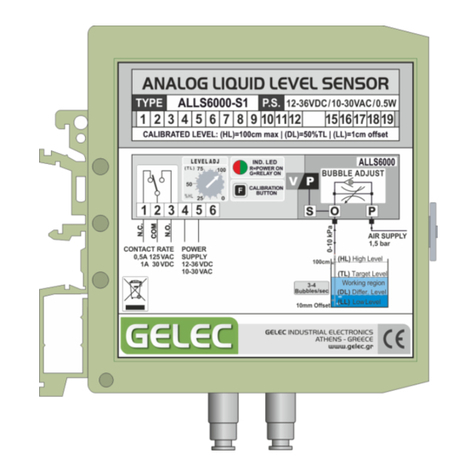
Gelec
Gelec ALLS6000 User's & technical manual
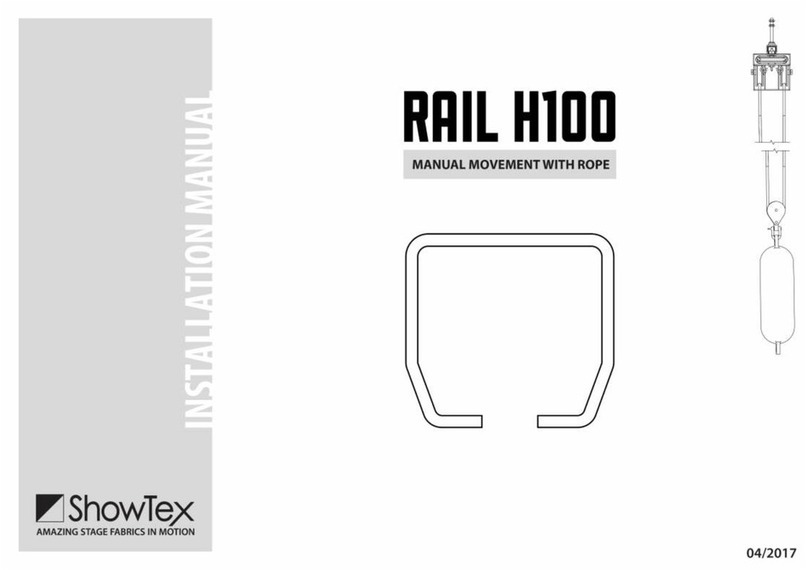
ShowTex
ShowTex Rail H100 installation manual
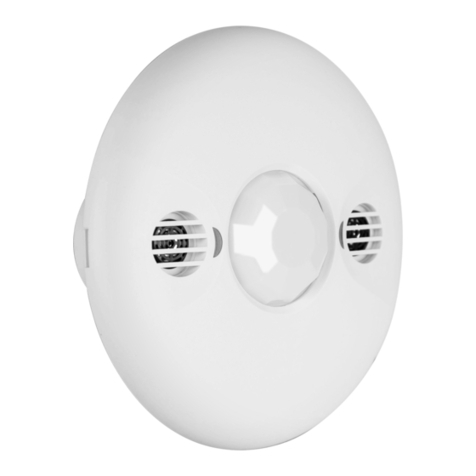
Revolution Lightning
Revolution Lightning rNET-OCC-HV-DT-CM Specifications and installation

